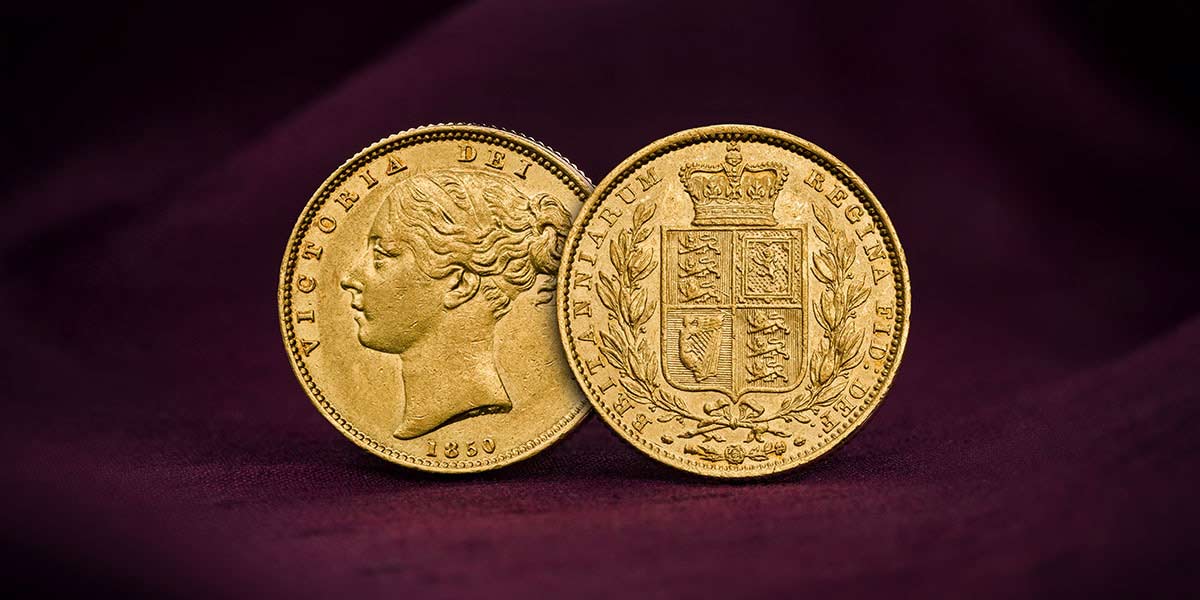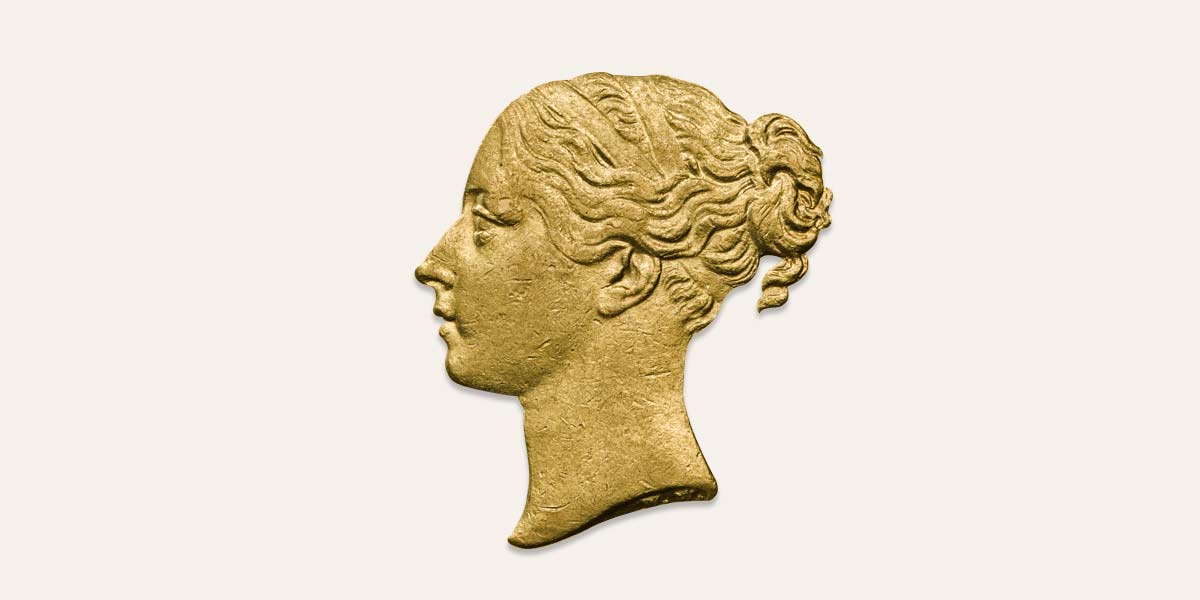It is impossible to imagine modern Britain without the influence of Queen Victoria and the era of incredible progress and innovation to which she lends her name. Born in 1819, she acceded to the throne in 1837 at 18 years old and reigned through a period of unprecedented change for Britain.
The monarch’s first coins were issued in 1838 and feature the Young Head coinage portrait by William Wyon on the obverse. Issued at the time of her Golden Jubilee in 1887, Sir Joseph Edgar Boehm’s coinage portrait known as the Jubilee Head was struck until 1893. That same year, Queen Victoria’s final coinage portrait, created by Sir Thomas Brock, was introduced to the coinage. Referred to as the Old Head or Veiled Head, the design shows the monarch wearing a crown and veil and was struck until her death in 1901.
Of these coinage portraits, Wyon’s Young Head undoubtedly takes pride of place. Wyon was clearly inspired by the neo-classical style of his mentor, John Flaxman, to create an uncluttered and well-balanced portrait. Familiarly known as the Young Head, its beautiful features flattered the monarch, who was a grandmother in her late 60s before she allowed it to disappear from the coinage. ‘You always represent me favourably’, she is reported to have told Wyon, whilst he, for his part, is said to have found the monarch an excellent sitter.
The only daughter of Edward, Duke of Kent, who was the fourth son of George III, Queen Victoria was born at Kensington Palace, London, on 24 May 1819. Crowned at just 18 years old, she presided over the British Empire upon which the sun never set. She saw Britain become an economic, industrial and military global power and, despite seven attempts on her life, reigned for almost 64 years, making her the second longest-reigning monarch in British history. Her reign left an enduring mark on British culture and society, which is why the Empress of India and ‘Grandmother of Europe’ is still revered to this day.

Path to Succession
Queen Victoria’s father died when she was just a baby. Her three uncles – George IV, Frederick Duke of York, and William IV – had no legitimate children who survived, which led to Victoria becoming heir to the throne. As a young princess, Victoria possessed creative talents and had a penchant for drawing and painting. She was educated at home by a governess and regularly wrote in a journal, something she continued throughout her life and reign. Victoria became queen at 18 years old upon the death of her uncle William IV on 20 June 1837.

Depicting a Young Queen
Reputed for his St George and the dragon design of 1817, Benedetto Pistrucci had made a considerable impact on the design of British coinage, but his colleague and rival William Wyon had also cultivated a strong reputation. Wyon secured the position of Chief Engraver of The Royal Mint in 1828 and his talents grew, earning him election to the Royal Academy a decade later.
Wyon’s ability to depict the human form in metal is exemplified through the Una and the Lion Five-Sovereign Pattern Piece, one of his finest works that many consider to be amongst the most beautiful coin designs in the world. Inspired by Edmund Spenser’s sixteenth-century poem ‘The Faerie Queene’, the design shows the young Victoria characterised as Una guiding the British lion.
Victoria takes centre stage in another of Wyon’s esteemed works in her first coinage portrait.
On 22 August 1837, then Master of the Mint Henry Labouchere, 1st Baron Taunton, received the following request from the Chancellor of the Exchequer:
“Her Majesty has commanded me to direct that the Chief Engraver and the Medallist of Her Majesty’s Mint shall attend at Windsor Castle on Friday next for the purpose of having the advantage of study for their models in their respective departments. They should be at Windsor very early and should report their arrival to the Lord or Groom in waiting. Her Majesty will give the artists separate settings on Friday.”
Thomas Spring Rice, 1st Baron Monteagle of Brandon
Wyon prepared a wax model from which his Young Head portrait of Queen Victoria was realised, immortalising the new queen as an attractive young woman. Perhaps unsurprisingly, the coinage portrait was struck on British coinage until Queen Victoria’s sixth decade.
Specification
| Specification | Value |
|---|---|
| Denomination | Sovereign |
| Alloy | 22 Carat Gold |
| Weight | 7.98 g |
| Diameter | 22.05mm |
| Reverse Designer | Jean Baptiste Merlen |
| Specification | Value |
|---|---|
| Obverse Designer | William Wyon |
| Quality | Circulating |
| Year | 1838–74 |
| Pure Metal Type | Gold |
| Condition | Very Fine |
